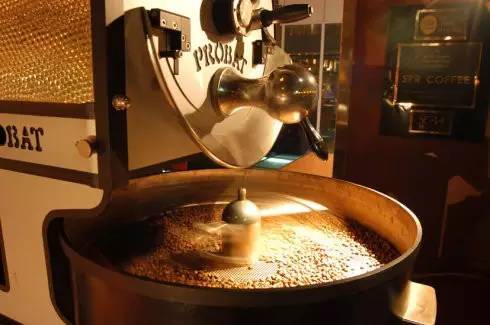How many cups of coffee can I drink a day? Research points out that a large cup of Starbucks will meet the standard.

There are more and more coffee shops in Taiwan, which has become a small escape space in modern busy life. Many office workers drink more than one cup of coffee a day. Italians even drink coffee after meals, and even a cup of black soup before going to bed does not hinder sleep. However, in the end, how many cups of coffee can you drink a day? American studies have pointed out that a maximum of 400 milligrams a day is equivalent to an extra-large cup of coffee at Starbucks.
Caffeine is found in the leaves and seeds of many plants and is commonly used as an insect repellent and herbicide. Doctors also use caffeine to restore newborns who have stopped breathing, and intravenous caffeine can cause seizures, The Atlantic reported. The Food and Drug Administration recommends that 400 milligrams of caffeine a day for healthy adults is the limit. 400mg equals about four cups of 8-ounce coffee, a cup of about 240 ml, or an extra large cup of coffee (venti) at Starbucks.
How is 400 milligrams estimated? The report says the 400 mg limit was set by a study review conducted by Health Canada in 2003. Over the past year, the International Institute of Life Sciences has again conducted a more detailed review of the safety evidence of caffeine and presented its findings at a seminar on experimental biology in Chicago.
The team studied more than 700 studies on the safety of caffeine and looked at the health effects of intake on the basis of 400 milligrams, covering cardiovascular, musculoskeletal, reproductive and behavioral areas. the study found that 400 milligrams is indeed a safe daily limit for healthy adults and no more than 300 milligrams for pregnant women.
Beyond this limit, the team also found evidence of a higher association with depression and restlessness, anxiety disorders and high blood pressure caused by DNA damage. But the researchers also stressed that this does not mean that 500 milligrams a day is definitely unsafe, because people's responses to caffeine vary widely.
In addition, the study did not find the health benefits of low to medium doses of caffeine, because 400 milligrams is almost certainly safe for most people, but not necessarily the best. The average American now consumes about 300 milligrams of caffeine a day. Caffeine is not only found in coffee. Many teas, chocolates, energy drinks and painkillers contain caffeine. It is reported that caffeine should be treated as a drug and consumed moderately through recording and tracking.
Important Notice :
前街咖啡 FrontStreet Coffee has moved to new addredd:
FrontStreet Coffee Address: 315,Donghua East Road,GuangZhou
Tel:020 38364473
- Prev

You like coffee? Come and set up your own coffee corner!
Go out for a cup of coffee with your best friend in the morning before going to work or on Sunday night. If you are a coffee lover, then the coffee corner should be convenient, fully functional and, of course, stylish. This is why we have collected some cool family coffee corners for your reference! The ideas of these decorations can be very different, it's entirely up to you, but I think you
- Next

The Art of Coffee Baking
After drinking a cup of fragrant coffee in a coffee shop, have you ever wondered how this coffee is made, what coffee beans look like before grinding, and how coffee beans are roasted? Now, it's not surprising to have a coffee roaster. Many boutique coffee shops have their own coffee roaster and their own coffee roaster.
Related
- Beginners will see the "Coffee pull flower" guide!
- What is the difference between ice blog purified milk and ordinary milk coffee?
- Why is the Philippines the largest producer of crops in Liberia?
- For coffee extraction, should the fine powder be retained?
- How does extracted espresso fill pressed powder? How much strength does it take to press the powder?
- How to make jasmine cold extract coffee? Is the jasmine + latte good?
- Will this little toy really make the coffee taste better? How does Lily Drip affect coffee extraction?
- Will the action of slapping the filter cup also affect coffee extraction?
- What's the difference between powder-to-water ratio and powder-to-liquid ratio?
- What is the Ethiopian local species? What does it have to do with Heirloom native species?

